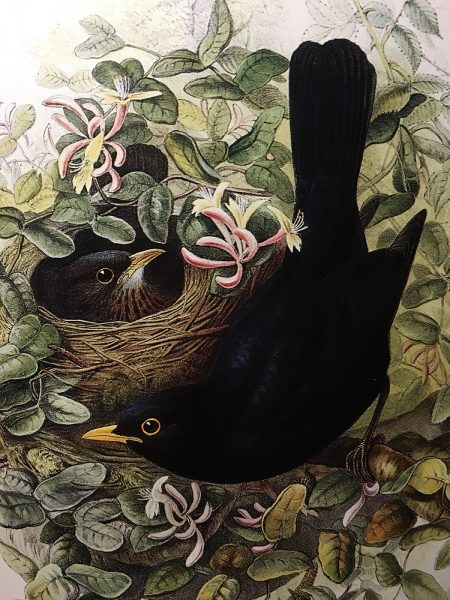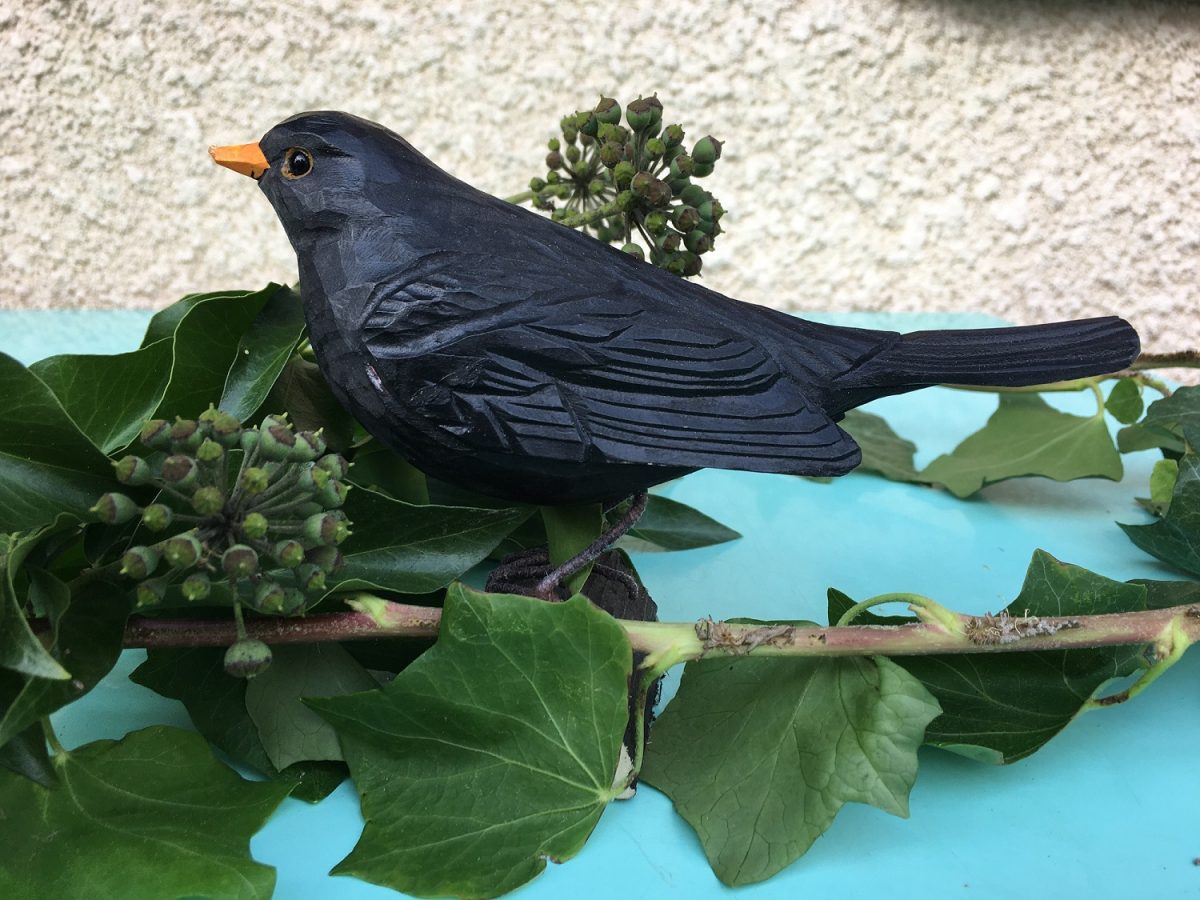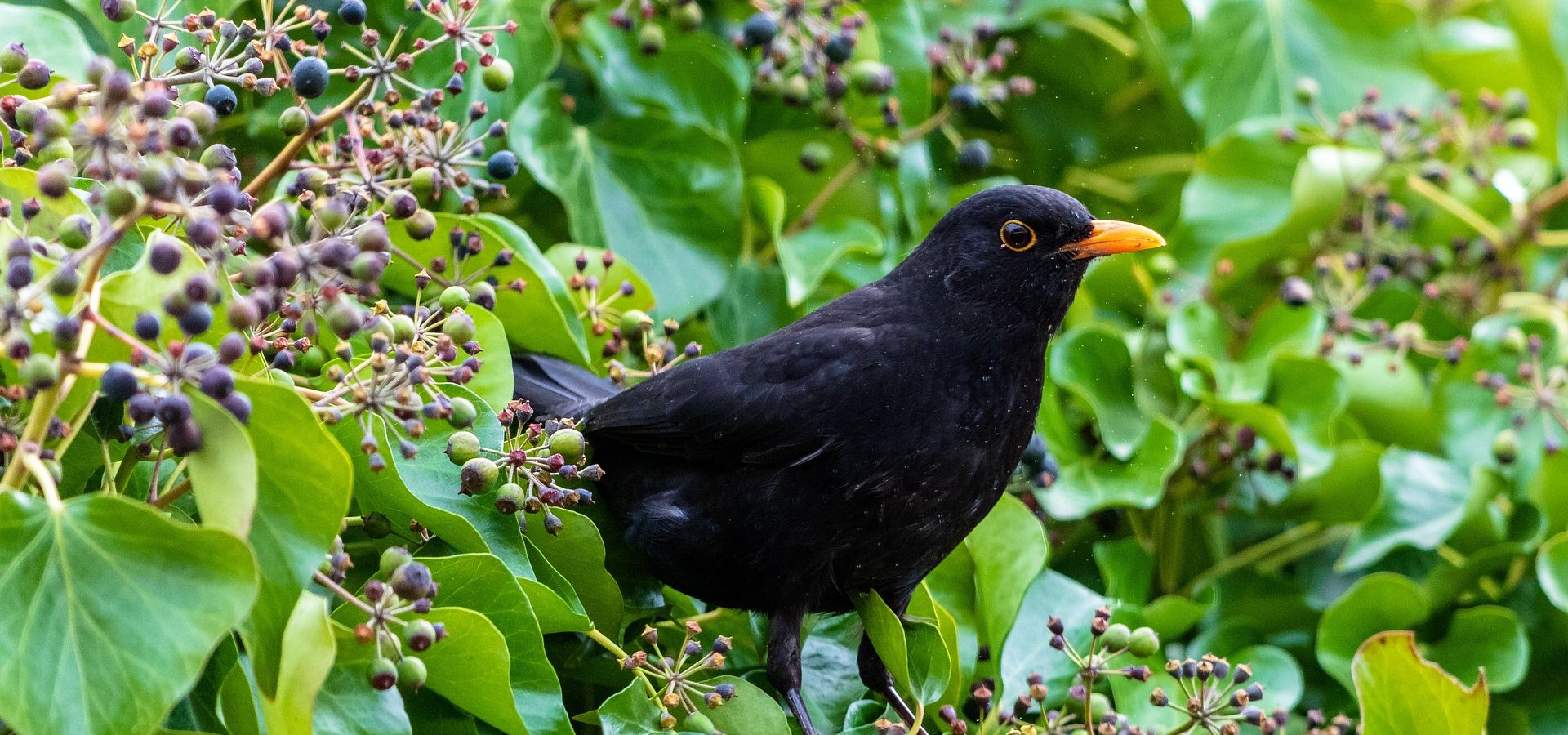(Alleen in het Engels)
The blackbird is only a partially migratory bird, so he stays all year round near the houses of the Aube department. Some people mistake it for a crow, which is quite negative.
In winter, the couple protects themselves from the bad weather and do not find much food.
The birds search into the ground with their beaks and they use the ivy, with its strong leaves, as a shelter and a dining room, with its caloric black berries, full of vitamins and lipids.
In the spring, it is a talented singer.
The couple is constantly active and the male, very dark with a yellow beak and a yellow-orange eye-ring, uses his virtuoso talent and sings rolling notes on a ridge, at dawn and dusk.
The female is rather brown and very dynamic, but mute.

A couple nest
After mating, the birds build their nest together as a couple, a few meters above the ground, with grass, moss and leaves, strengthened with mortar made from mud and their saliva mixed together, in a hedge or in some ivy, to protect themselves from dangers.
A few numbers: Weight: 100 g (the crow weights 240 g), longevity: 10 years (the crow lives for 20 years), size: 24 cm (the crow is 48 cm long)
The female lays four greenish-blue eggs, incubated for two weeks alternatively with the male, while they eat on the ground, earthworms, fruits, spiders, snails.
The babies stay in the nest for fifteen days (they are altricial), fed by their parents.
They often jump before they can fly and are victims of predators.
The blackbird runs, stops, raises its body, jumps on both legs, listens (worrying about a potential danger), hits the ground with its beak, scratches it with its strong legs, tilts its head to listen when some earthworms come up.

The blackbird’s host: the underestimated ivy
In winter, when the shrubs stay dormant, the ivy is always green, and its yellow flowers bloom to feed the last butterflies and bees, then after pollination, it offers black berries to the birds.
The ivy does not become encrusted: it grows around its stake without destroying it but rather protecting it.
The ivy’s spikes fix themselves to a support from which the ivy can climb towards the light, but contrary to popular belief, it does not become encrusted, it grows around its stake without destroying it but rather protecting it.
Yet it is not aparasite like the mistletoe that sucks the sap from the branches.
Its spikes arefull of glue warts, a powerful glue that could be used in surgicalmedicine.
The higher the ivy climbs, the more the leaves change shape: shadow leaves, intermediate leaves, light leaves.
It is a natural green wall available for all. It protects from the rain and can make the temperature rise up to 4 degrees.
With the authorization of « l’Est Eclair / Libération Champagne »
Head and featured photo © Herbert Aust
